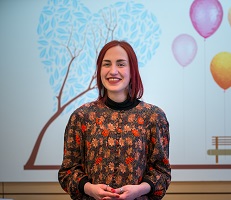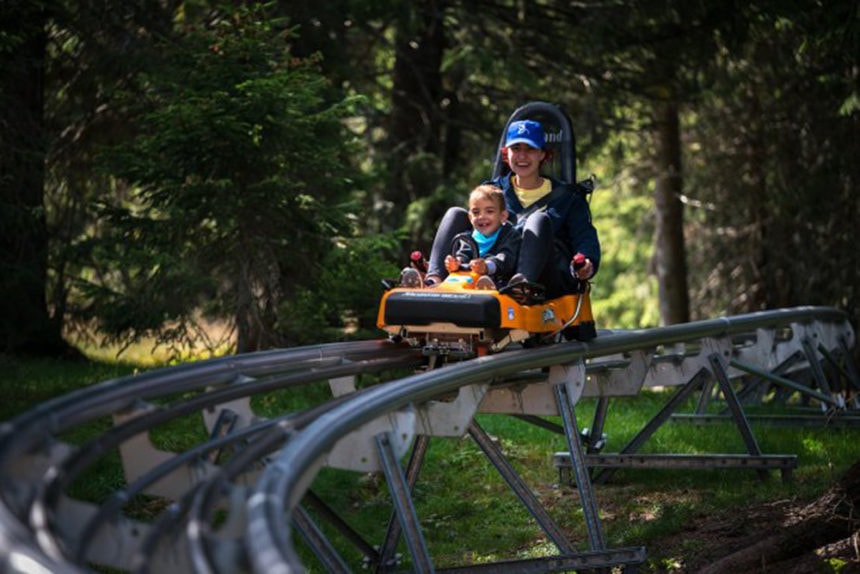
Nevena Mitranic is a third year doctoral student in Preschool Pedagogy at the Department of Pedagogy and Andragogy of the Faculty of Philosophy, University of Belgrade. At the same faculty she defended her Master’s thesis “Child’s Play in the context of Education Policy and Practice”. Since September 2016, she has been working as a demonstrator for the courses Child’s Play and Creativity and Developing Early Childhood Education Practice, for Bachelor and Master Students at the Faculty of Philosophy, and also assisting in the program Curriculum Development and Evaluation.
We should value play simply for the process itself, as many of its benefits emerge only later
Guided by her professors’ saying that child’s play develops flexibility of thought and action Nevana Mitranic hopes her doctoral work will contribute to encouraging educators and practitioners to play more with children and discover unpredictable beauty of their profession, and help them gain better understanding of child’s play, its challenges and ways to overcome them. Due to the Novak Djokovic Foundation scholarship this year she has become a teaching assistant at the Department of Pedagogy and Andragogy of the Faculty of Philosophy, University of Belgrade.
During the recent Friendship Games organised by the Novak Djokovic Foundation, I had the honour of meeting an amazing six-year-old called Oggy. When we met, I was responsible for piloting the alpine roller coaster that we were riding together. As the ride slowly climbed to gain speed, I said to him, “If this thing runs too fast for you, just tell me and we’ll slow down, ok?”. I wasn’t sure if he understood how fast it might be though, and I thought he might get scared – he was so tiny after all.
As we started rushing down the tracks, however, Oggy raised his hands in the air and yelled: “Yes! Yes! Freedom! Freedom!”. I don’t think it’s likely that he had ever discussed freedom with anyone before, or that someone had taught him what that word even meant. But he felt it, and he knew it. He simply knew what it was.
What if ’feeling the world’ is a way of knowing it too? We let the world move us. Our bodies respond and engage with the things and people around us, opening space for new and unexpected possibilities and actions to emerge. This is exactly what happens when we play.
Anthropological studies have shown that our oldest ancestors built their understanding of the world through feeling it with their bodies. They didn’t have much knowledge in the traditional sense of the word, but their movements were guided by feeling and imitation of the world around them.
In imitation comes creation. That’s how rituals came to life – songs and dancing, and then later stories and mythologies. Moving together meant becoming aware of what it means to live in a group – to care, to cooperate, to trust, to fight, to stand one’s ground.
In a similar way, children start not by knowing much – but by feeling a lot. This feeling is the force of their participation in the world. Babies begin to explore their environment by engaging with it physically – they touch, they taste, they push, pull and they throw things to see what happens. These movements allow them to discover the world around them, to understand it and to do something with it, even if that understanding is not the rational one.
As adults, we often seek rationally for measurable results from activities like play that children take part in. We want indicators to show us whether they are indeed getting the benefits from what we think they should. For example, if we look at active play – or play that encourages physical movement – the focus is generally on the health benefits it provides.
It’s true that the role of active play in helping to fight obesity is important, and play is surely the most pleasant way to get enough exercise in order for children’s muscles and bones to develop properly.
Recent discoveries in neuroscience show that the benefits of active play go well beyond physical development, and have a positive impact on brain development too. The research shows a positive association of physical activity in early years with the growth of neural networks underpinning learning processes and skills. These include memory, cognitive flexibility, and stress regulation. Active play in the early years helps to prepare the brain’s readiness and ability to gain and retain information to use in different ways and in different situations. Of course, we wouldn’t be humans if we didn’t have those skills and abilities. And, of course, we might conclude that the more we give children opportunities to develop those skills and abilities, the more we help them to cope with the complexities of modern life.
The easy conclusion to make is that the more children play – the more they gain. The easy solution is to assign concrete achievements that could be accomplished whilst playing and check-in now and then to see if they are indeed getting out of play what we think they should get. However, anthropology teaches us that it is not so much the accomplishments themselves, but rather the actual processes of play that benefit a child. The most important aspect of play might not be what our children will become by playing, but what play enables them to be.
What does it mean to be free?
And by moving in active play, the child and the world have a lot to share,
to respond to and be responsible,
to take risk and to take care,
and even when everything is unsure and unexpected,
in movement they both dare.
… and that makes us wonder, what do children learn if we silence that flare,
make them sit quietly,
ask them to think privately,
keep their hands (and feelings) off
and stare…?
By Nevena Mitranic


